Hi all!! Welcome to blog 4, where I’ll be giving you a glimpse into what a day in the Perfect Lab is like. I hope you enjoy reading about my day 🙂
On days when we meet for our BSURF morning meetings, I usually arrive at my lab around 10:40 am to my lab. On days when we do not meet, I arrive around 9 am to get started on my experiments. Upon arrival, I drop off my belonging in the shared office space I have with other members of my lab. I then check in with Jenny–my lab mentor–and go over protocols, progress from the day before, and tasks on my checklist of things I need to get done for the day. After we have gone over the goals for that day, we begin heading to the lab.
When entering the lab, the first and most important task we do is that we begin to put on our protective gear, consisting of our lab coats and gloves. Once everything is worn, I head to the next location, where I will begin my first task of the day. Usually, before beginning the protocol, I turn on any machines that I will be using for the task or collect any equipment/materials that will be crucial for the experiment tasks. My tasks often vary on the day; some days, I might be doing completely different tasks or switching back & forth between some.
My first week at the lab consisted of me creating dozens of YPD plates, which I later learned were the source of the food for my yeast cells to grow in after they had been streaked onto the solution.
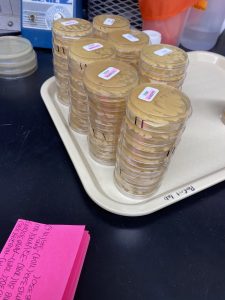
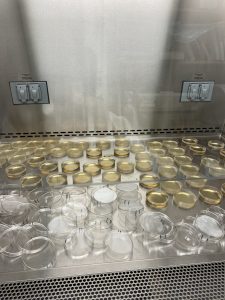
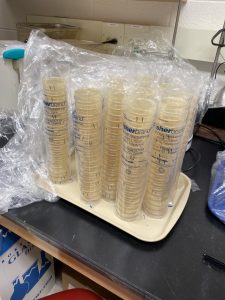
YPD plates are an essential part of my experiments as I am working on analyzing the capsule and cell growth of Cryptococcus neoformans isolate strains.
The YPD plates help to grow/thrive these isolate strains into colonies which I will inoculate into a media known as SAB MOPS, to then do microscope imaging with their solution of cell growth. YPD plate production is not something that I do every day because it is a timely process, so whenever I am low on plates, I make sure to make a little more than enough for the experiment.
Once 3 mL tubes of the SAB MOPS media + cell are inoculated and placed onto a tube. I leave them on a shaker, and throughout the course of 5 days, I am taking a sample, placing it on a microscope, and taking/ saving about 10 pictures of each strain to later analyze the capsule process of their cells.
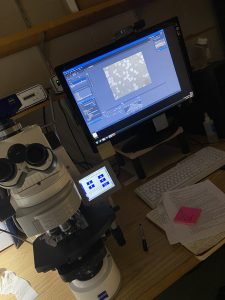
This past week, I learned how to do imaging with a robot, which makes the processing of pictures faster because I can do it with multiple strains at a time rather than doing it one by one. The robot does image processing for 96 well-plates and 384 well-plates, which I take images of their growth progress over the course of 3 days. As demonstrated below:
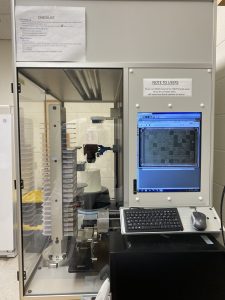
So on most days, I am taking strains and doing microscope imaging of their cells and capsules, whether it is through the microscope or robot. If time remains after imaging, I will see what other tasks are needed to be completed for future experiments/days so that they can run smoothly when it is time to begin.
After my tasks for the day are complete, I clean up my bench workspace, take off my equipment, and grab my stuff to leave for the day. Once I arrive at the apartment, I jot down in my lab notebook the procedures, any notes I collected during the day (which I have written on sticky notes that I stick onto my notebook as reminders), and a quick reflection on things I learned or improved on. Then it is off to eat, sleep, and prepare for the next day ahead.

Nice. Congrats on graduating to the robot! 🙂 A lot of hard work goes into being trusted to use the more expensive equipment! Nice pictures too. Keep up the good work!